Validación externa de modelo predictivo de cirugía subóptima en cáncer de ovario avanzado
llistat de metadades
Author
Date of defense
2025-01-24
Pages
134 p.
Department/Institute
Universitat Jaume I. Escola de Doctorat
Doctorate programs
Programa de Doctorat en Ciències Biomèdiques i Salut
Abstract
El objetivo de esta tesis ha sido validar el modelo predictivo de cirugía subóptima en cáncer de ovario avanzado descrito en 2019 con datos recogidos de varios hospitales colaboradores: un total de 83 pacientes. Existen diferencias entre esta población y la que se usó para realizar el modelo, obteniendo significación estadística en: citorreducción conseguida, presencia de ascitis y presencia de suboclusión intestinal. Al no hallar homogenidad en las características de las pacientes de ambos grupos, y la falta de datos de pacientes de cirugía subóptima, no se ha podido realizar la validación externa. Algunos hospitales no han incluido ninguna cirugía subóptima, y la nueva muestra presenta un número menor de suboclusiones, siendo un factor de riesgo importante en el modelo. No presenta riesgos altos, cosa que nos hace pensar que no se han incluido en la recogida pacientes con alto riesgo de cirugía subóptima, incurriendo en un sesgo de selección.
Despite advancements in treatments, ovarian cancer remains the leading cause of death among gynecologic cancers, accounting for 5% of female cancers, with an incidence of 8 per 100,000 women annually in Spain. Up to 80% of these cancers are diagnosed at advanced stages (III and IV), with a survival rate of less than 20-30% at five years. The standard treatment has remained unchanged for decades and involves primary cytoreductive surgery to remove as much tumor tissue as possible, followed by platinum-based chemotherapy. A key factor influencing the survival of these patients is achieving complete cytoreduction during the primary surgery, which entails resecting all visible tumor tissue. Thus, a critical aspect of surgical treatment is predicting whether the surgical team can achieve complete cytoreduction based on the patient’s preoperative characteristics. In this context, several predictive models for cytoreduction have been developed in recent years. Based on data from cytoreductive surgeries performed in the abdominal-pelvic oncologic surgery unit of the General Hospital of Castellón between 2013 and 2019, Drs. Escrig and Llueca developed a predictive model for suboptimal cytoreduction. This model classifies patients preoperatively by predicting the likelihood of not achieving complete surgery. The model includes two predictive approaches: the R3 model, which uses predictive information from preoperative assessments (CT-based PCI, laparoscopic PCI, and the presence of bowel subocclusion), and the R4 model, which also incorporates intraoperative evaluation (intraoperative PCI). The R3 model showed a sensitivity of 45% and a specificity of 91%, while the R4 model demonstrated a sensitivity of 82% and a specificity of 75%. The objective of this thesis was to validate this model using prospectively collected data from various collaborating Spanish hospitals, all of which are reference centers for such surgeries. Data were collected for 83 patients and their corresponding surgeries. Differences were observed between this new population (experimental group) and the population used to develop the model (control group), with statistically significant differences in: achieved cytoreduction (p-value = 0.049, favoring the experimental group), presence of ascites (p-value = 0.002, favoring the experimental group), and presence of bowel subocclusion (p-value = 0.002, favoring the control group). Only three suboptimal surgeries were recorded in the experimental group, compared to an a priori prediction of at least 13 suboptimal cases based on the sample size. Due to these results, indicating non-homogeneity in the clinical characteristics of the experimental and control groups, and the lack of suboptimal surgery cases, external validation of the model was not feasible. The proportion of suboptimal surgeries reported by many collaborating hospitals was 0%, and the experimental group had significantly fewer cases of bowel subocclusion compared to the control group—an important risk factor in the R3 and R4 models. Applying the two predictive models to the experimental group yielded predictions of low to intermediate risk, suggesting that patients with a high risk of suboptimal surgery were not included in the sample. This likely reflects a selection bias, as such patients were appropriately referred for neoadjuvant therapy.
Keywords
Cáncer ovario avanzado; Carcinomatosis Peritoneal; Enterografia TC; Índice de carcinomatosis peritoneal; Cuantificación carcinomatosis; Modelo predictivo; Advanced ovarian cancer; Peritoneal Carcinomatosis; CT enterography; Peritoneal carcinomatosis index; Carcinomatosis quantification; Predictive model
Subjects
61 - Medical sciences; 616 - Pathology. Clinical medicine; 617 - Surgery. Orthopaedics. Ophthalmology; 618 - Gynaecology. Obstetrics



